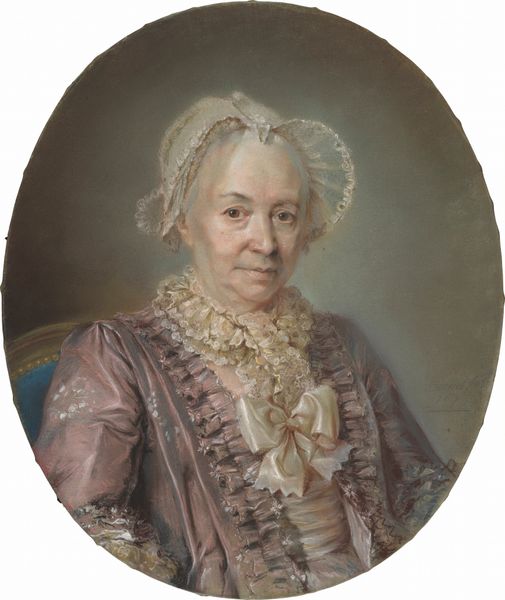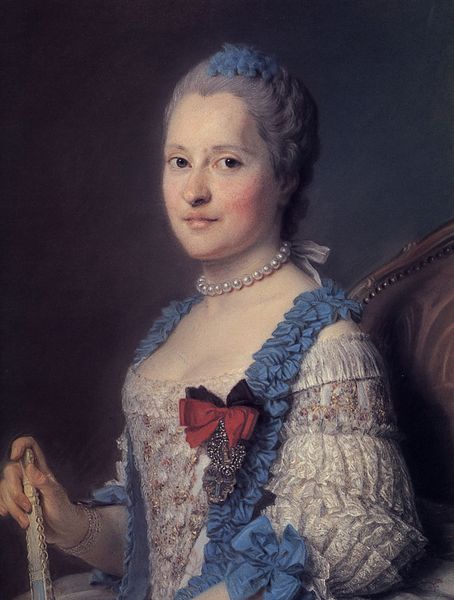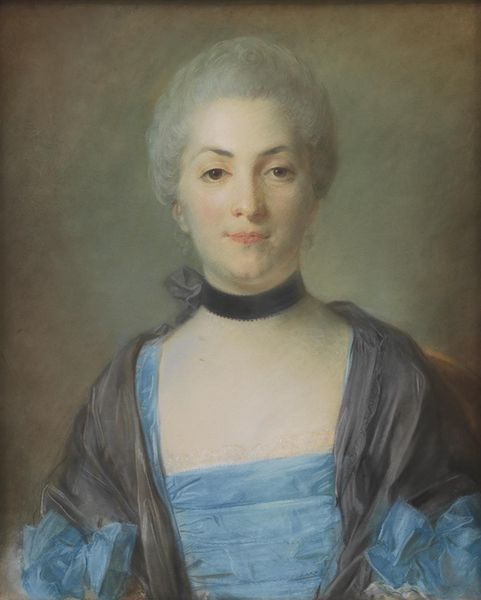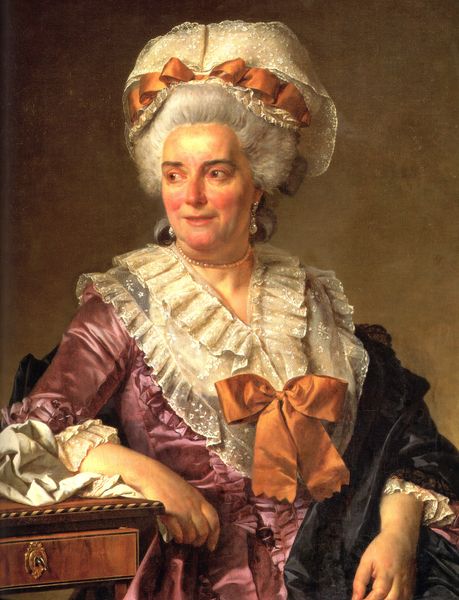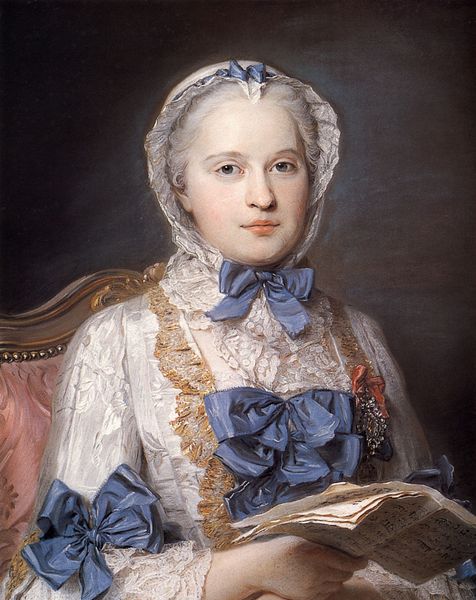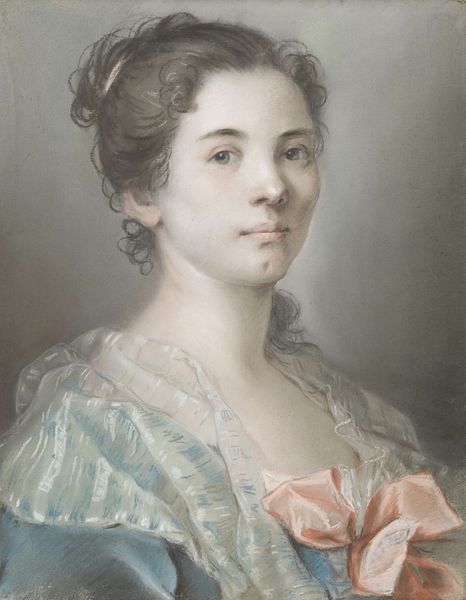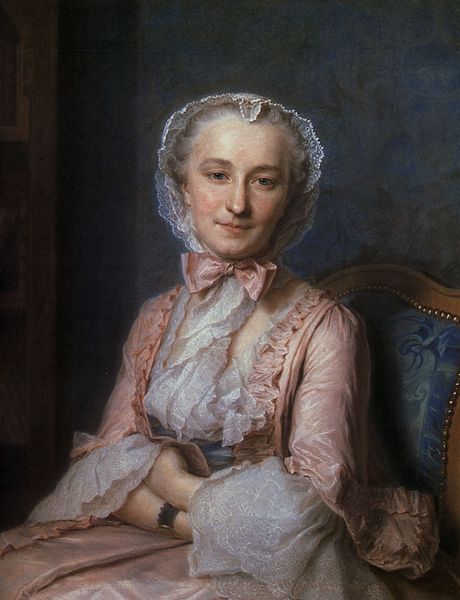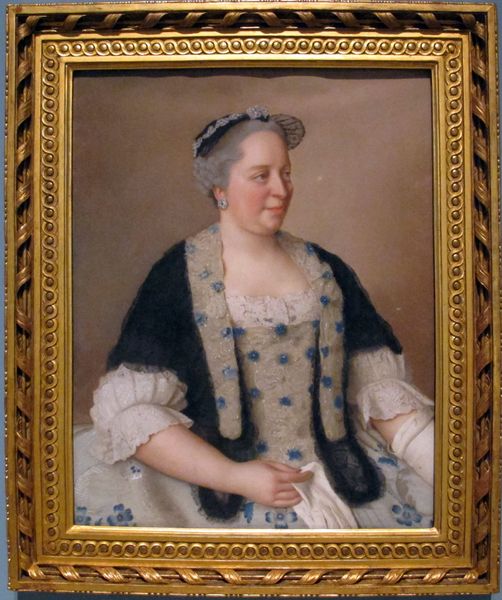
Copyright: Public domain
Curator: We’re standing before Joseph Duplessis’s "Mme De Saint-Paulet," a portrait rendered in 1780. Editor: There's an immediate serenity, even a quiet dignity that radiates from her face, especially contrasted by the elaborateness of the fabric in the Rococo style. The pale grays, whites, and pinks create a pleasing visual balance. Curator: Duplessis, favored by the French court, captured the aristocracy's refinement, but also a burgeoning shift in societal values toward something more intimate. Her relaxed posture suggests an informal moment. This was painted shortly before the radical changes to the society due to the revolution. Editor: Yes, her poise communicates an interesting dichotomy: a controlled public image, but the softer modelling implies vulnerability beneath the layers of expensive clothing. There's a gentle almost diffused light across her face drawing the eye to her direct, steady gaze, making for a deeply compelling focal point. Curator: That "steady gaze" tells a complex story. Women of the aristocracy played a central role in the intellectual life of the salons, where social and political ideas were discussed, which had to maintain both their visibility and respectability. Her slight smile hints at the knowledge that was expected of them. Editor: Agreed, but it’s worth noticing how that knowledge doesn't overpower her femininity. The lightness of touch and painterly texture keeps the focus balanced—she’s neither overtly cerebral nor simply decorative. Her humanity really shines through despite her expensive clothing. Curator: It's true. Duplessis' skill lay in his ability to present aristocratic subjects not as symbols of power, but as individuals, reflective of the changing times and ideals leading up to the French Revolution. Editor: The quiet subtlety he's captured definitely adds a psychological weight that transcends pure documentation of the physical form. It’s quite captivating really, considering its historical context. Curator: Precisely. It offers a glimpse into the subtle social complexities of that era. Editor: A subtle and beautiful portrait of the period's complexities in representation.
Comments
No comments
Be the first to comment and join the conversation on the ultimate creative platform.
